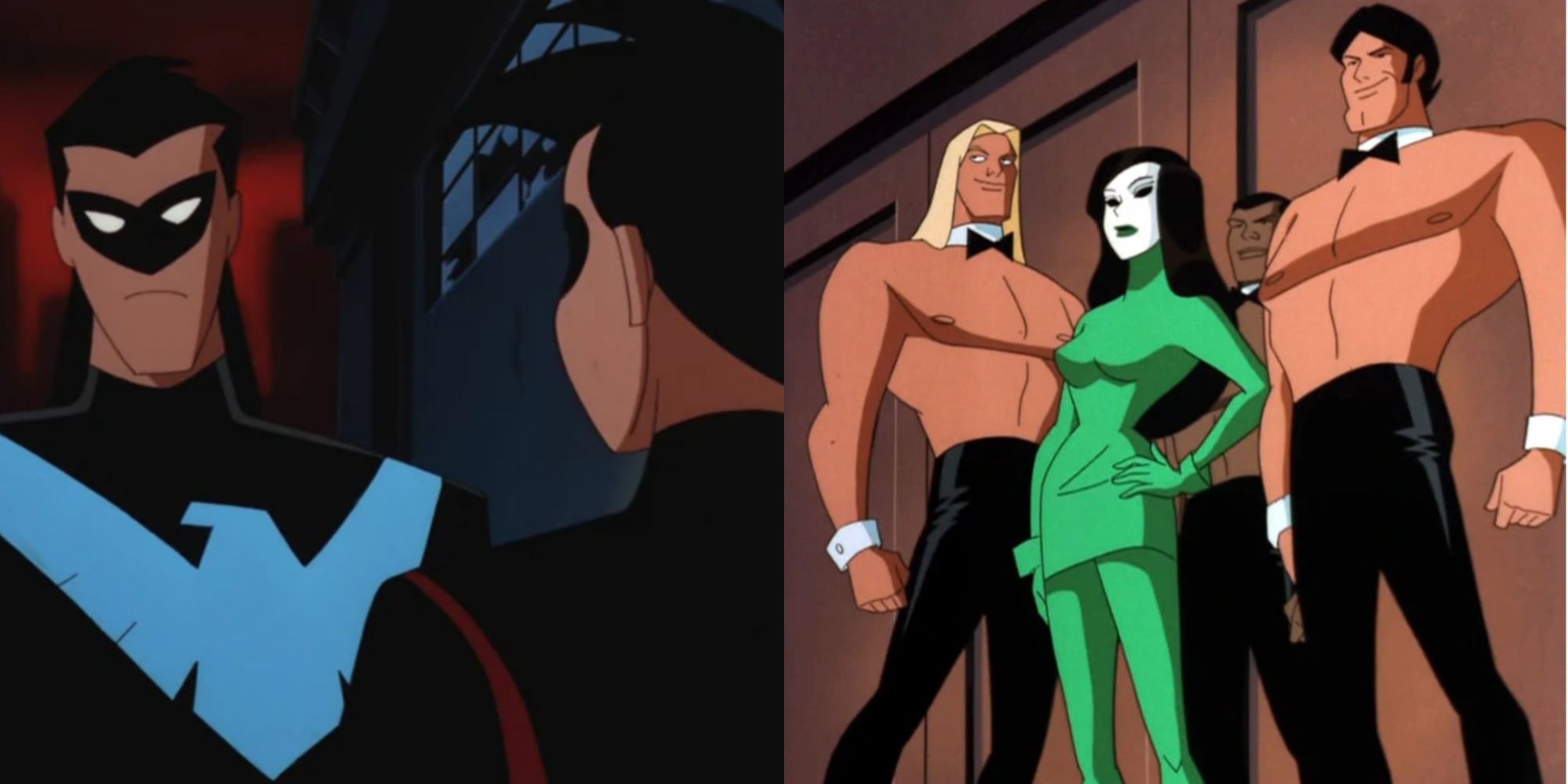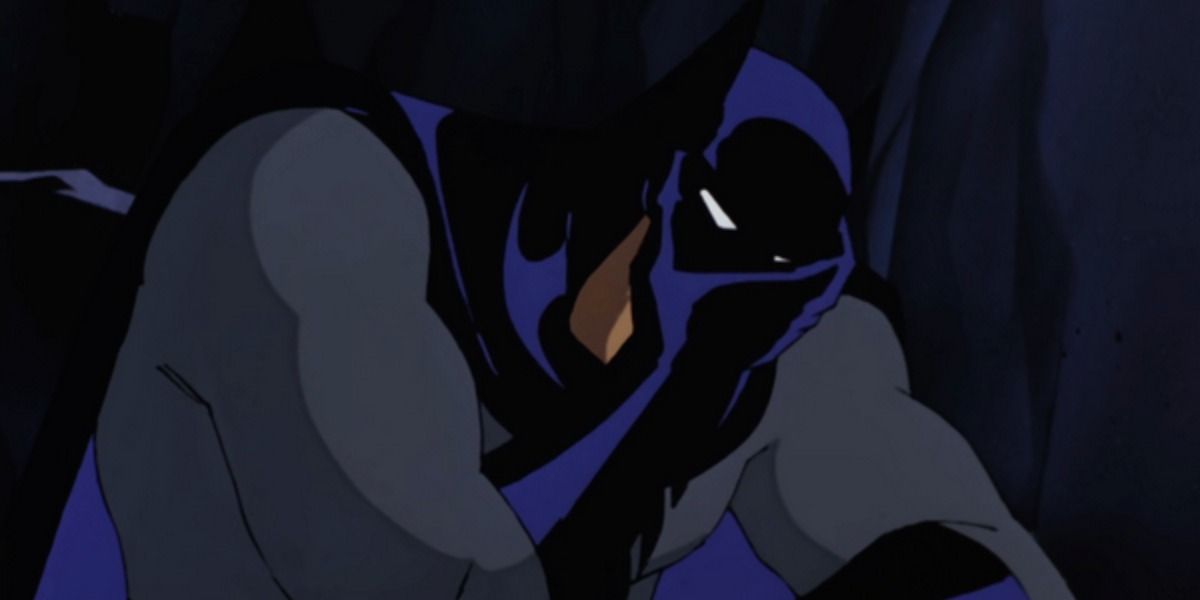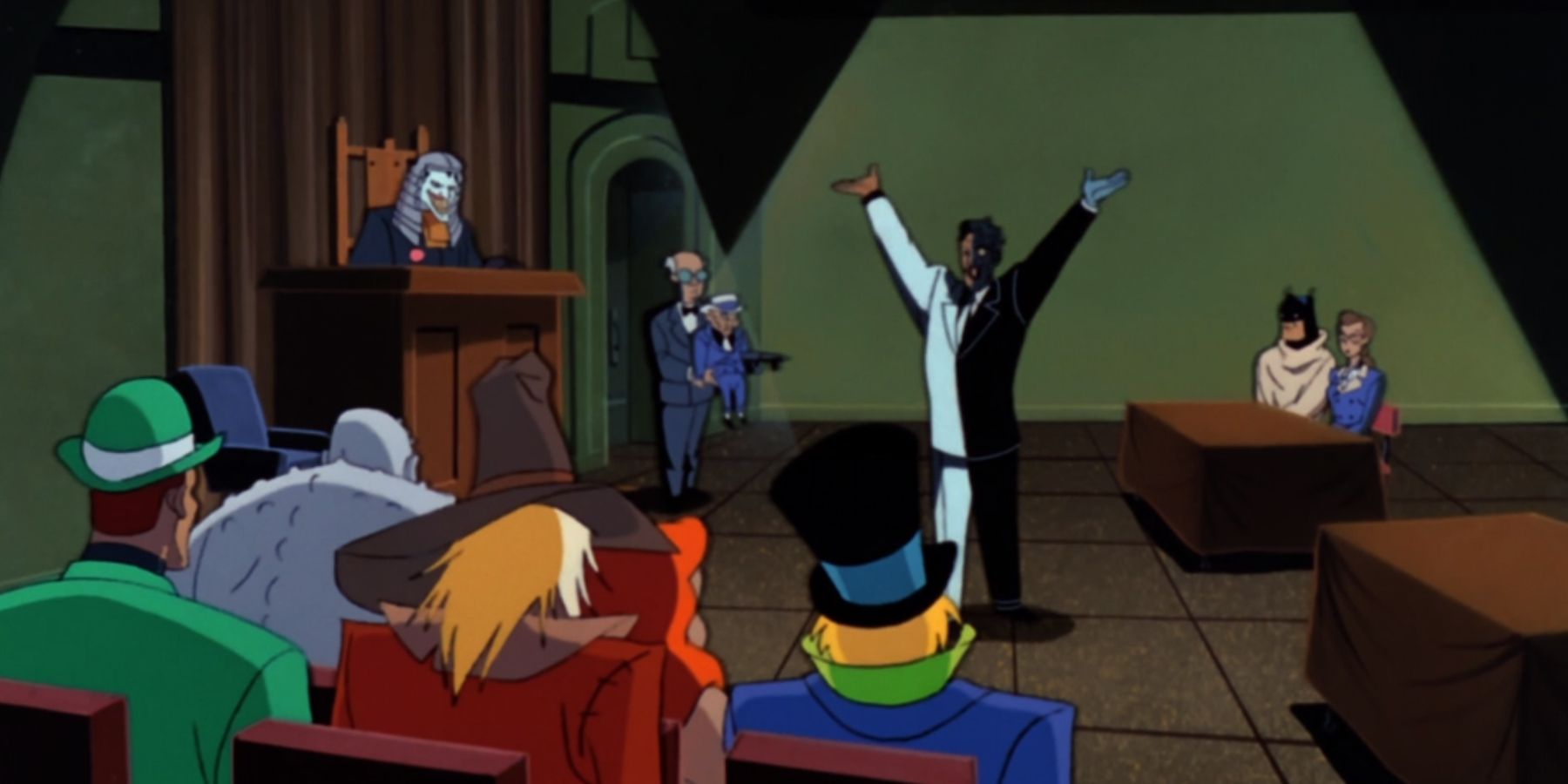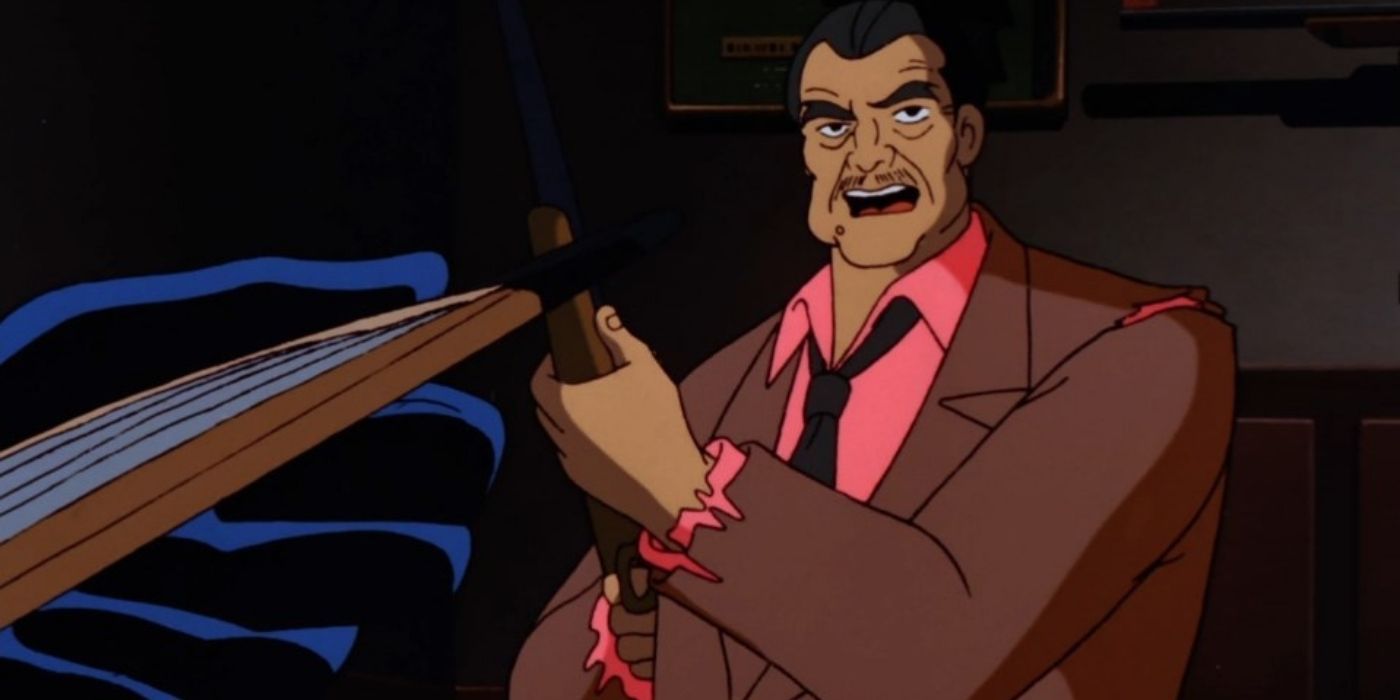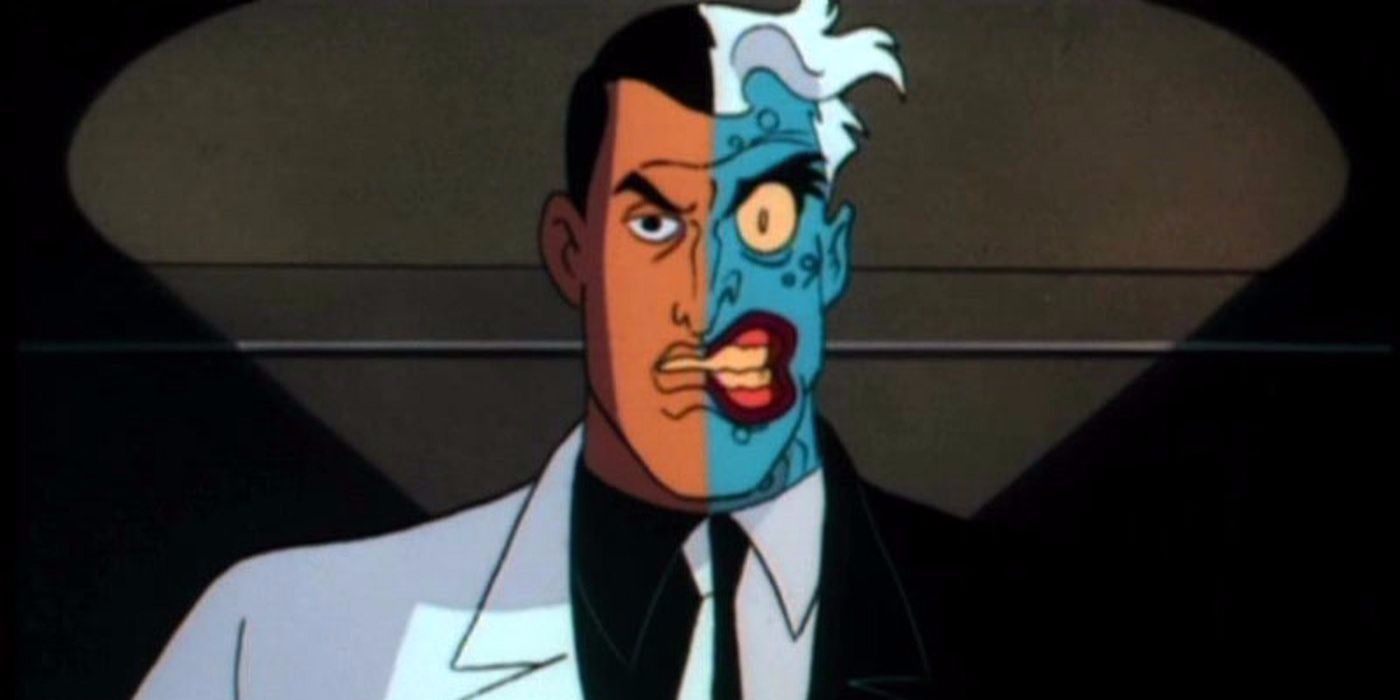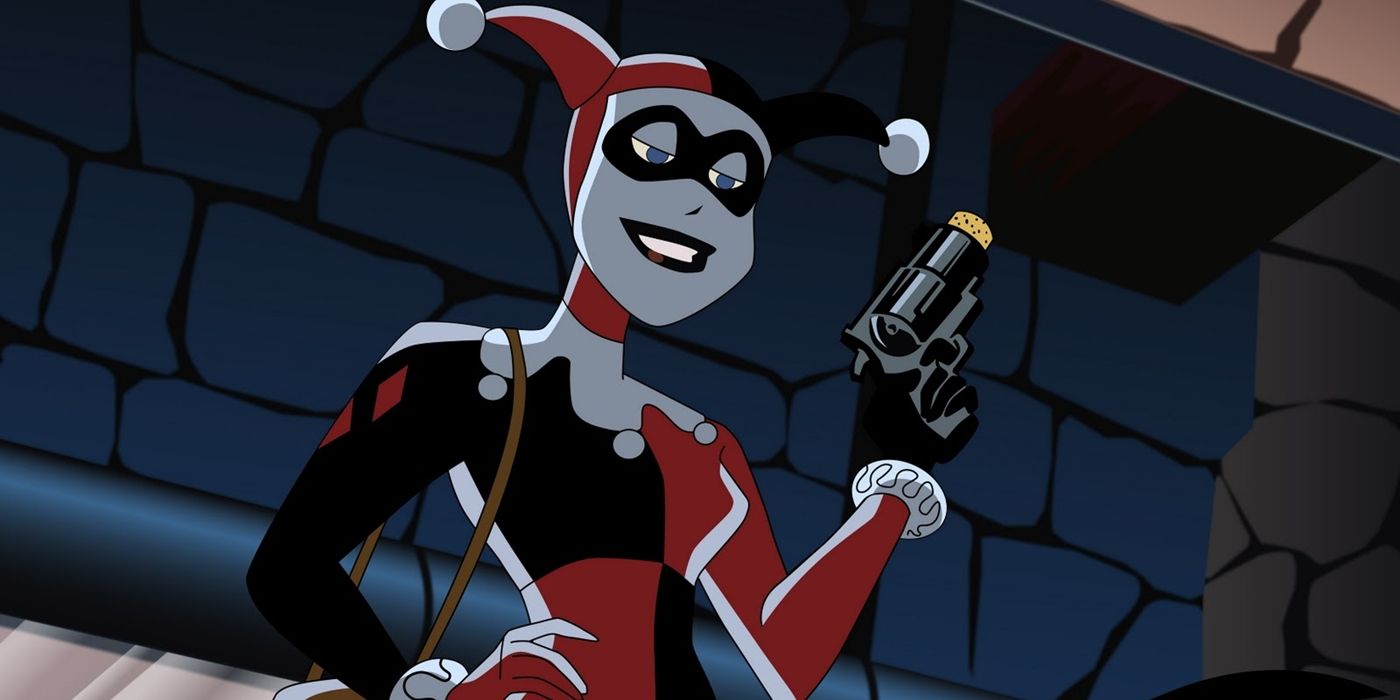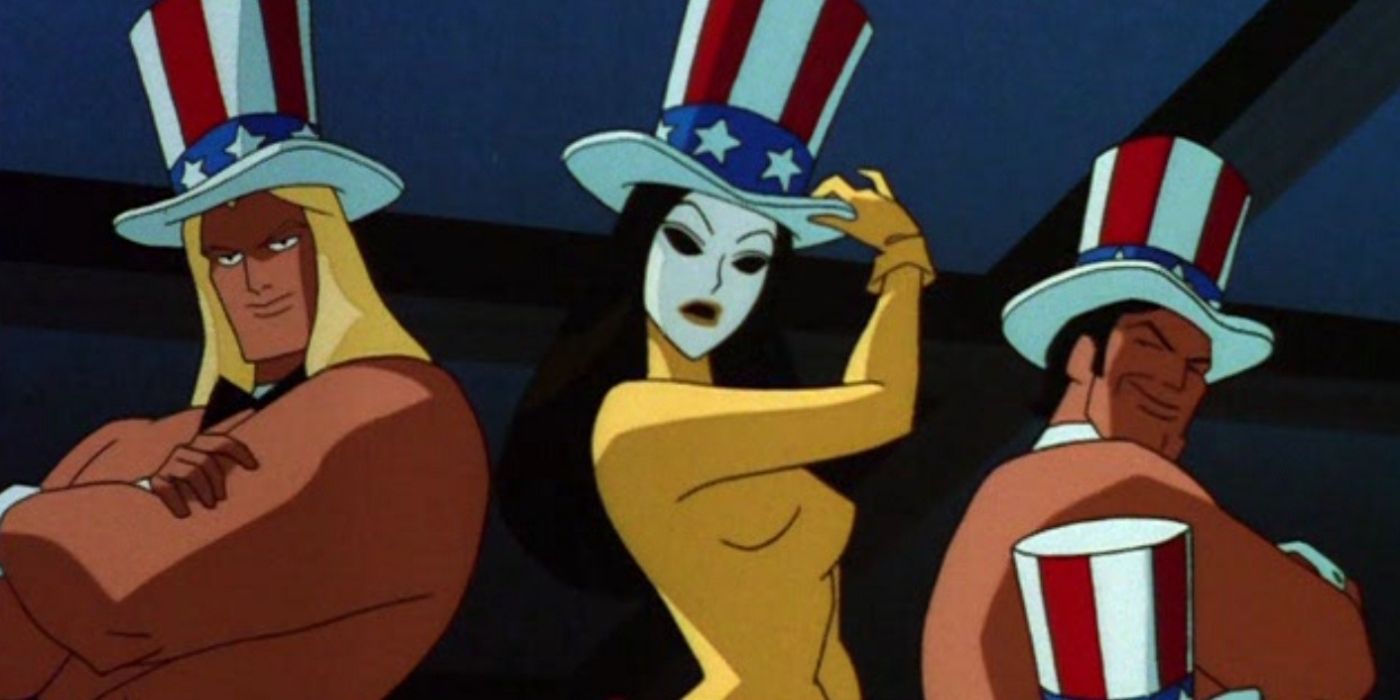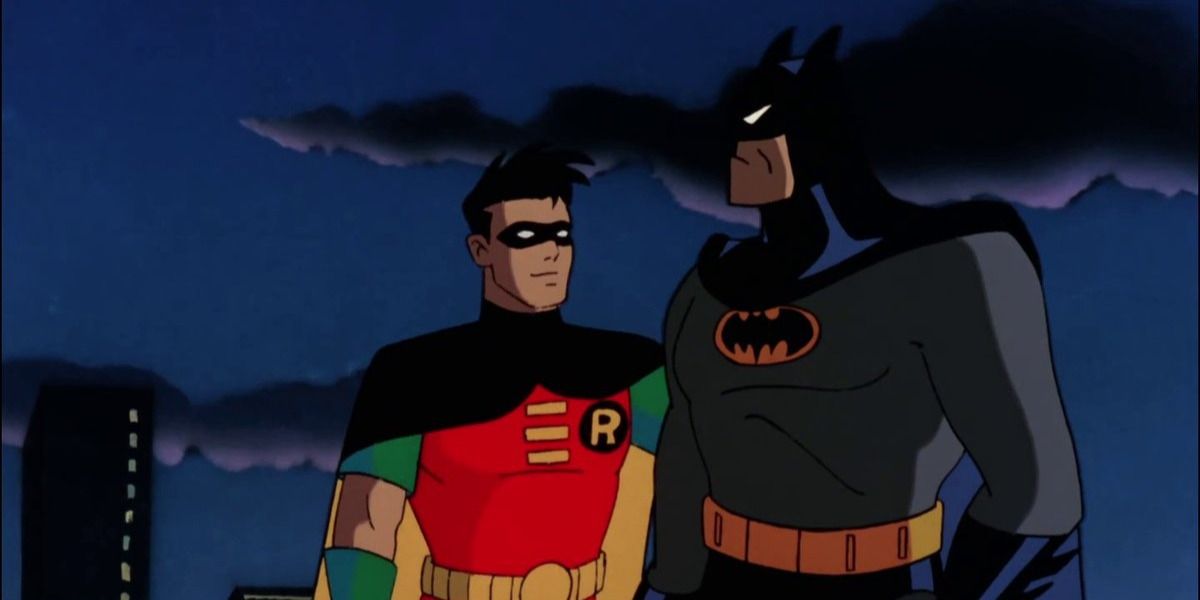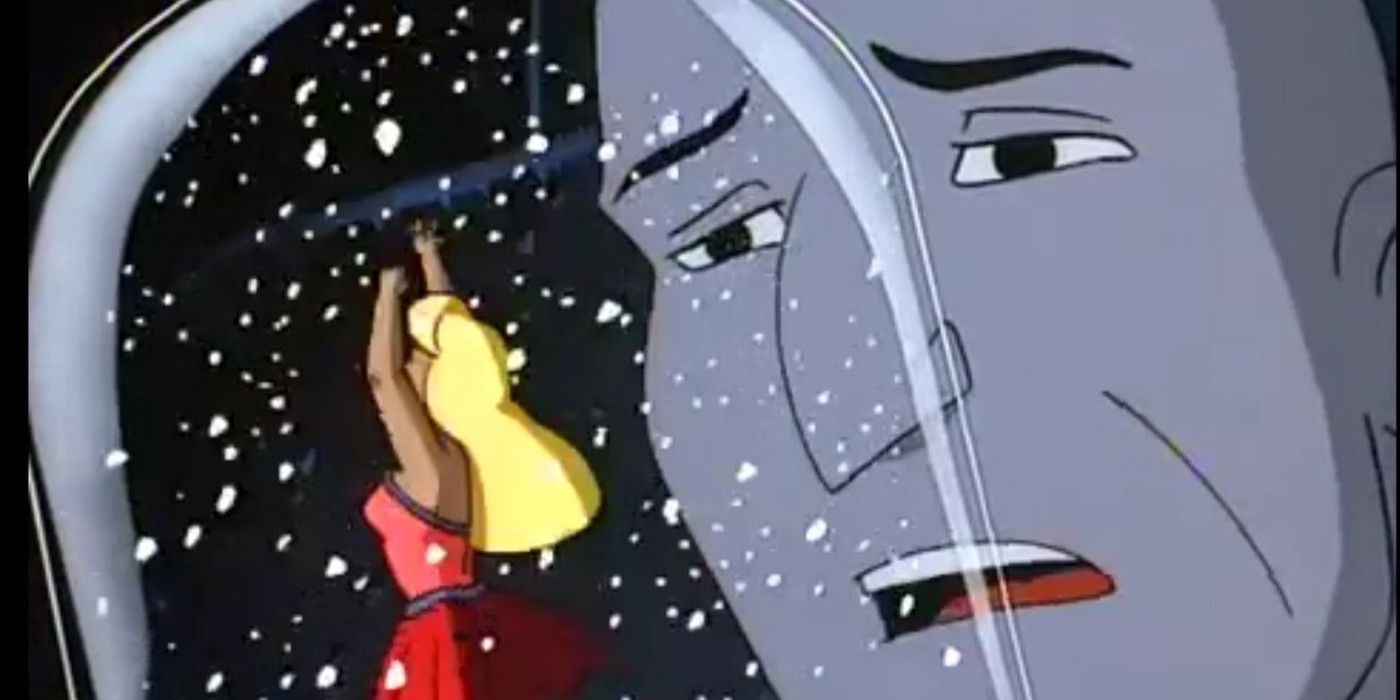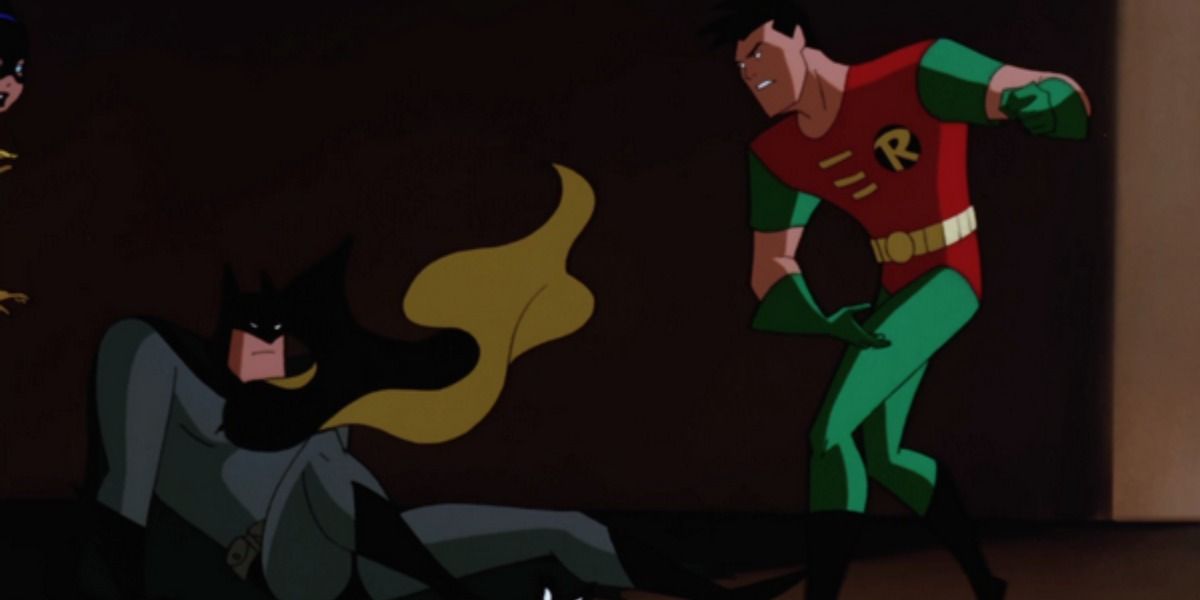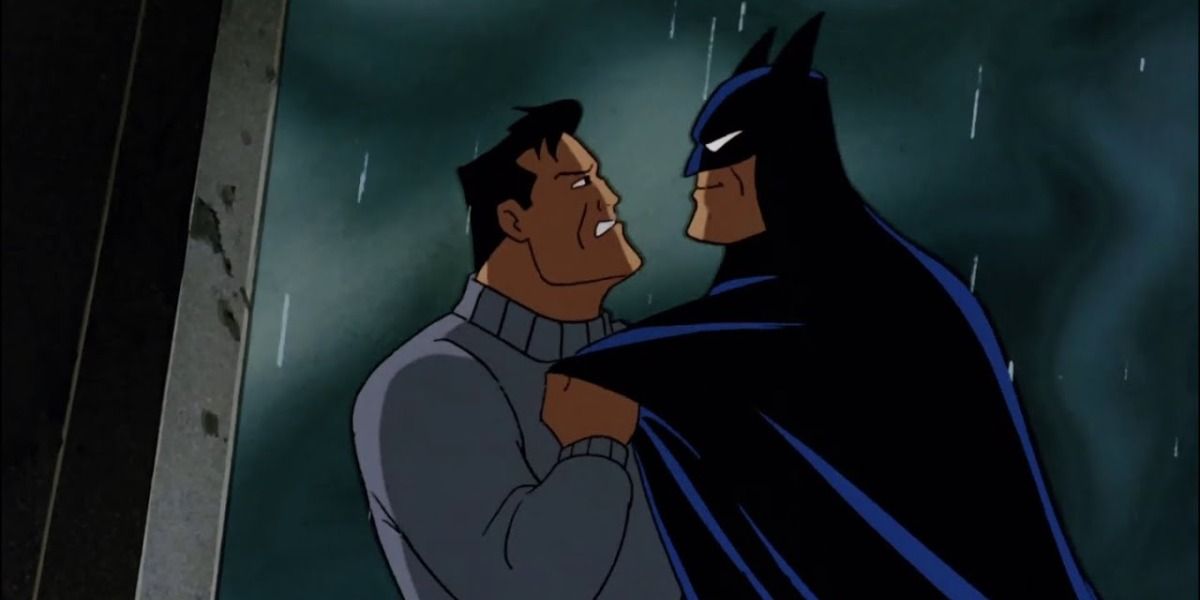The endless debate about the best Batman tends to focus on the live-action versions of the character: Keaton, Bale, Pattinson. However, fans who grew up in the 90s would say that Kevin Conroy was the definitive actor for the character. Batman: The Animated Series is consistently ranked as one of the best-animated series of all time with good reason. A combination of great writing, majestic scoring, inspired voice acting, and clean yet distinctive design in the film noir style was packed into a 22-minute run-time - including the title sequence and end credits.
The creators trusted kids could handle the darker subject matter and found clever ways to work around censoring restrictions. There are many well-crafted episodes to choose from, but the following tackle the darkest, most profound themes and continue to prove why three decades later, this iconic series is still so highly acclaimed.
"I Am The Night"
On the anniversary of his parents' deaths, a soul-weary Bruce Wayne is considering giving up the cape and cowl. When Jim Gordon gets shot during a sting, Bruce blames himself and spirals into self-loathing. He reveals his greatest fear to Dick Grayson: losing more loved ones, especially him.
Bruce's doubts about how much good he's achieved are something anyone can relate to. He yearns to move on from the past and stop letting it define him - another understandable urge. It's one of the only times in the series that Batman's usually stoic willpower is shaken. At the forefront is how much responsibility he puts on his shoulders - one of his greatest merits and flaws.
"Trial"
The inmates take over Arkham and force the district attorney to defend Batman in a mock trial to determine his guilt in creating them. With Joker as the judge and Two-Face as the prosecutor, this episode could have easily been a fun throwaway. But underneath its gimmicky surface is a clear reference to the War on Crime and the idea of responsibility. Batman would not exist if not for flaws in the judicial system, and the Rogues would have made the same choices that led them astray despite his existence.
The D.A. defends her client, convincing herself of Batman's importance along the way. The "not guilty" verdict is not so surprising for villains as complicated, unpredictable, and self-aware as these.
"It's Never Too Late"
The mob has typically taken a backseat to the more flamboyant villains in Batman's Rogues Gallery, but Arnold Stromwell and Rupert Thorne are the main players in this mature episode. The series' recurring theme of childhood trauma is emphasized in flashback scenes that reveal Stromwell's ongoing guilt for an accident that resulted in his brother losing a leg. After realizing his drugs have made an addict of his son, Stromwell must find the strength to take responsibility for his actions and build a new world for his family - and city.
Batman eschews more blatant crime-fighting for hard-boiled detective work, resulting in a nuanced storyline that proves he doesn't always need to be combatting crazed supervillains to shine.
"Two-Face"
This famous two-part episode is the tragic story of Harvey Dent's transformation into Two-Face. It explores themes of childhood trauma, repressed anger, and mental illness with a somber, respectful touch.
Near the end of Part Two, the meticulous, Juilliard-trained Kevin Conroy uses Bruce Wayne's voice in a desperate attempt to get through to his old friend. Not only does this showcase Conroy's talent and the outstanding voice direction by Andrea Romano, but it proves Bruce cares about Harvey so much that he'd risk exposing his greatest secret. Unfortunately, Harvey is too far gone and no longer believes in his redemption. His arc continued in "Second Chance" and concluded with "Judgment Day," both featuring beautiful storytelling and Two-Face's total inability to see the gray.
"Mad Love"
Out of all the characters invented by Batman: The Animated Series, Harley Quinn is inarguably the best. Not only does this episode serve as her origin story, but it also dives deep into her abusive and chaotic relationship with the Joker - as well as his virulent chemistry with Batman. The script pushes the censoring limits, giving as much depth as it can to a very real issue.
The series couldn't show Joker hitting Harley, but the sound of impact and Batman's wince is almost worse than seeing it. "Mad Love" might have been remembered by kids for featuring Batman laughing (what!) and the piranhas, but her desperate need to please her "Puddin'" is disturbing to watch as an adult.
"Mean Seasons"
This meta episode is a social commentary on sexism and ageism in the entertainment industry. As with many greats in the Rogues Gallery, former-supermodel-turned-vengeance-seeker Page Monroe (likely a nod to Marilyn Monroe, and voiced by Sela Ward, who was campaigning against age-based discrimination) is more victim than villain. The pitfall of using sex to sell things is epitomized in Monroe's history of plastic surgery in a desperate attempt to stay relevant after turning 30.
When Bruce comments that Monroe was a "pretty girl" in her modeling days, Barbara Gordon shrewdly points out that she was as old as he is currently. But while the writing is sharp and poignant, the show's fourth season was controversially insinuating a sexual relationship between Batman and Batgirl.
"Robin's Reckoning"
The show's portrayal of Dick Grayson's Robin was hit or miss due to restrictions from the network and censorship which forced the creators to make him college-age. But the use of flashbacks to show the deaths of the Flying Graysons and subsequent aftermath allows the audience to see the development of Bruce and Dick's father/son relationship and proves the importance of Robin.
Amidst themes of revenge versus healing, childhood trauma, justice, and closure, this episode features Robin bursting through a billboard on his motorcycle and dragging Tony Zucco across a dock before dangling him over the side. It's hard to say if this is more memorable than Batman coming as close as he'll ever to telling Dick he loves him.
"Heart Of Ice"
Many have written about the importance of this episode due to its tragically humanizing portrayal of Mr. Freeze. But the script goes beyond the cryogenically sealed supervillain to expose corporate hypocrisy and the perils of capitalism. The real criminal is Ferris Boyle, the apathetic businessman who pulled the plug on Nora Fries, triggering Victor's transformation. Immediately after admitting to Bruce Wayne that his company's motto about being the "people's company" is nothing more than a line, he says he's been given a humanitarian award. It's sharp, satirical, and unfortunately, entirely believable.
Batman tries to save Victor Fries more than once on the show, but like Two-Face, it is to little avail. Mr. Freeze is the finest villain reinvention of Batman: The Animated Series.
"Old Wounds"
Also known as: "When Nightwing Punches Batman," this episode features the impetus for Dick Grayson's transformation from Robin to Nightwing. It contrasts Dick and Tim Drake's experiences and perspectives while showing Batman's impact on not only their lives but the lives of the criminals he's faced. The true spine of the story is Dick's journey from boy to man and his realization along the way that he can continue the fight without directly imitating his mentor.
It gives a fresh perspective on members of the Bat-Family, which the show didn't explore until the revamped fourth season. More recent adaptations like Young Justice have looked upon Bruce Wayne's parenting skills in a more positive light.
"Perchance To Dream"
After taking a blow to the head as Batman, Bruce wakes up to an idyllic yet strange reality where his parents are alive, he's engaged to Selina Kyle, and Lucius Fox runs Wayne Enterprises. While initially suspect, Bruce embraces his new and improved life - or wants to before realizing it's nothing but a dream.
Bruce's utter refusal to live a lie, no matter how much he craves his happier, easier existence in an alternate reality, is a testament to Batman's enduring popularity. He never gives up, he never backs down, and he does the things that no one else can or is willing to do. His face-off with himself in the cemetery has both Hitchcockian and Freudian connotations.

